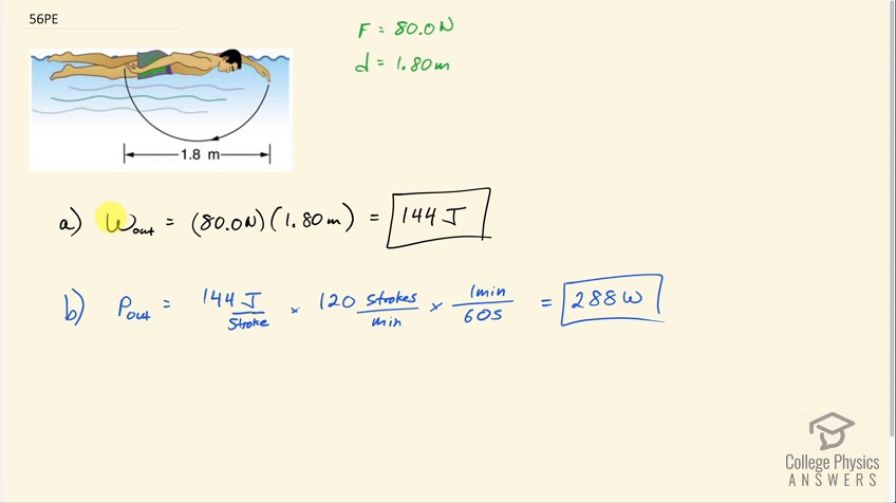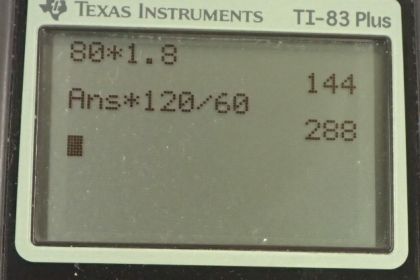Question
The swimmer shown in Figure 7.44 exerts an average horizontal backward force of 80.0 N with his arm during each 1.80 m long stroke. (a) What is his work output in each stroke? (b) Calculate the power output of his arms if he does 120 strokes per minute.
Final Answer
Solution video
OpenStax College Physics for AP® Courses, Chapter 7, Problem 56 (Problems & Exercises)

vote with a rating of
votes with an average rating of
.
Calculator Screenshots
Video Transcript
This is College Physics Answers with Shaun Dychko. The swimmer exerts a force of 80 newtons backwards over a distance of 1.80 meters in a single stroke. And so the work output of their arms is 80 newtons times 1.80 meters which is 144 joules. The power output is... we need to figure out what are the joules of energy, or of work done, per second because joules per second is what a watt is. So we have 144 joules for a single stroke that we calculated in part (a) then multiply by 120 strokes every minute— we are told in the question— the strokes cancel and then multiply that by 1 minute for every 60 seconds and the minutes cancel leaving us with joules per second. So we have 288 watts is the power output of the swimmer's arms.
